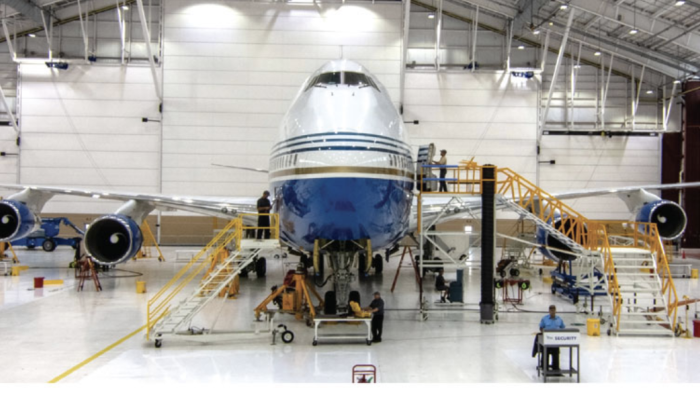The 2008 Product Support Survey conducted by Aviation International News revealed some interesting changes from last year, but once again Gulfstream rated highest overall, snagging the top spot in the survey for the sixth time in a row. In second place this year was Cessna, followed by Dassault Falcon in third place.
For this year’s survey, AIN (a sister publication of NBAA Convention News) invited 13,552 subscribers to rate the service and support they receive from manufacturer product support operations and from factory-authorized independent service centers for new jets as well as those older than 10 years. Ratings spanned from one (inadequate) to 10 (excellent) and included the following nine categories:
• Authorized service centers–cost estimates vs. actual, on-time performance, scheduling ease, service experience;
• Factory service centers–same as above;
• Parts availability–in stock vs. back order, shipping time;
• Cost of parts–value for price paid;
• AOG response–speed, accuracy, cost;
• Warranty fulfillment–ease of paperwork, extent of coverage;
• Technical manuals–ease of use, formats available, timeliness of updating;
• Technical reps–response time, knowledge, effectiveness;
• Overall product reliability–how the product’s overall reliability and quality stack up against the competition’s.
Of those AIN readers invited to participate, 1,394 returned their surveys either online or by filling out paper forms, for a total return rate of 10.28 percent, up slightly from last year’s 10 percent.
For newer jet product support, Gulfstream received ratings above 8.00 in seven of nine categories; the nearest to that performance in the new airplane field was Cessna, with four 8.00-plus ratings. This year, Embraer dropped behind Bombardier’s Challenger and Learjet after scoring higher than Bombardier last year. And for the 2008 survey, Bombardier Global support swapped places with Learjet support for the bottom of the rankings. Boeing’s BBJ division moved to fourth place from last year’s second, followed by Hawker Beechcraft’s smaller jets (Premier I/IA, Diamond, Beechjet 400/400A, Hawker 400XP) and the midsize Hawkers. Bombardier’s Challenger and Learjet landed in seventh and eighth place, respectively, followed by Embraer’s and Bombardier’s long-range Globals. The largest drop was for Hawker Beechcraft’s lighter jets, down 5.66 percent to an overall average score of 7.36.
Operators clearly are unhappy with Hawker Beechcraft’s cost of parts for these jets, and the low 5.79 rating–down from last year’s 6.35–for this category dragged down what otherwise would have been a higher overall average.
Pilatus and its PC-12 topped the 2008 survey for newer turboprops, followed closely by Hawker Beechcraft’s King Air support, although both Pilatus’ and Hawker Beechcraft’s overall averages dropped slightly but not significantly. AIN didn’t receive enough responses to include two popular turboprop manufacturers: Piper with its single-engine Meridian and EADS Socata’s TBM series.
Gulfstream’s support for its older jets continues to rate highly with AIN readers. The GIV and GV slipped slightly to 8.15 from an 8.19 overall average, and GII and GIII support, provided mainly by General Dynamics Aviation Services in the U.S., climbed this year to 7.71 from 7.64 last year. The big jump this year was Sabreliner’s move to third place; the company continues to provide extraordinarily strong support for a fleet of jets that went out of production in 1981. Sabreliner’s overall average increased 22.95 percent in the older jets field to 7.62, up from 6.19 last year.
Both of Hawker Beechcraft’s jet categories in the old jet field claimed higher overall ratings this year, with the lighter jets growing 2.76 percent and midsize Hawkers up 12.11 percent. The two categories were in sixth and seventh place, behind Dassault Falcon in fifth. Bombardier’s Learjet support also enjoyed a ratings uptick, with an overall average of 6.61, up 8.16 percent from last year, but still in second-to-last place in the older jet field. IAI’s support for its older jets, including the Westwind (which General Dynamics Aviation Services no longer supports), filled the last position.
In the older turboprops arena, Cessna Conquests didn’t receive enough ratings to qualify for listing in this year’s survey, and Piper’s Cheyennes received just enough to be listed. Owners and operators of Mitsubishi MU-2s responded enthusiastically this year and boosted the Japanese company’s rating to 9.17, especially high for an out-of-production airplane. Clearly, Mitsubishi’s strategy of continuing to provide full support to the remaining MU-2 fleet is keeping owners happy.
At the other end of the spectrum are Piper’s Cheyenne turboprops, not built since 1985. The Cheyenne overall rating climbed this year to 5.96, up from last year’s 5.78. Piper doesn’t own any factory service centers for the Cheyenne and lost many of its Cheyenne tooling fixtures in hurricanes that affected its Florida factories, making parts support for these older turboprops a challenge.
The rankings for the top three helicopter manufacturers are the same this year, with Bell Helicopter again in first place, followed by MD Helicopters and Sikorsky in second and third places, respectively. Only two helicopter manufacturers saw overall ratings increases: MD Helicopters, which climbed 1.26 percent to 6.78 from 6.69, and AgustaWestland, to 6.13 from 5.84. Bell dropped 5.05 percent, Sikorsky 2.21 percent and Eurocopter, moving to last place in a swap with AgustaWestland, slid the most at 5.9 percent.







